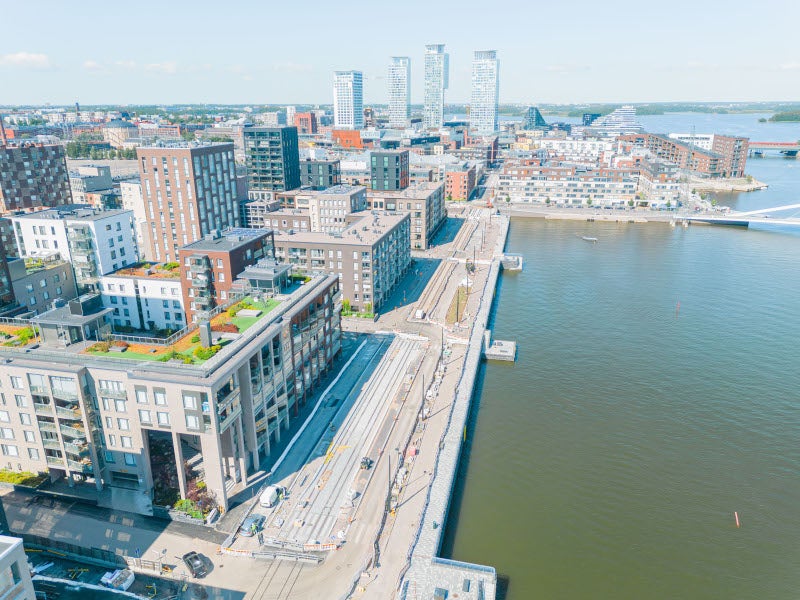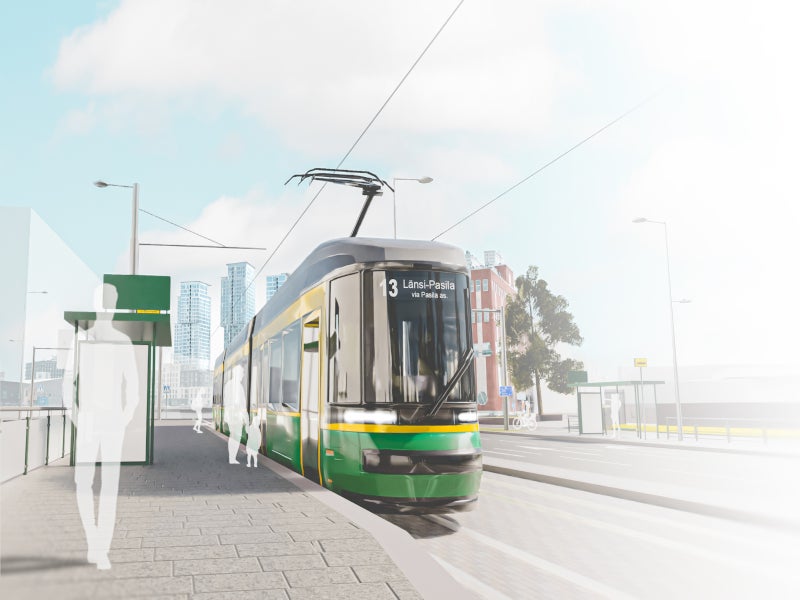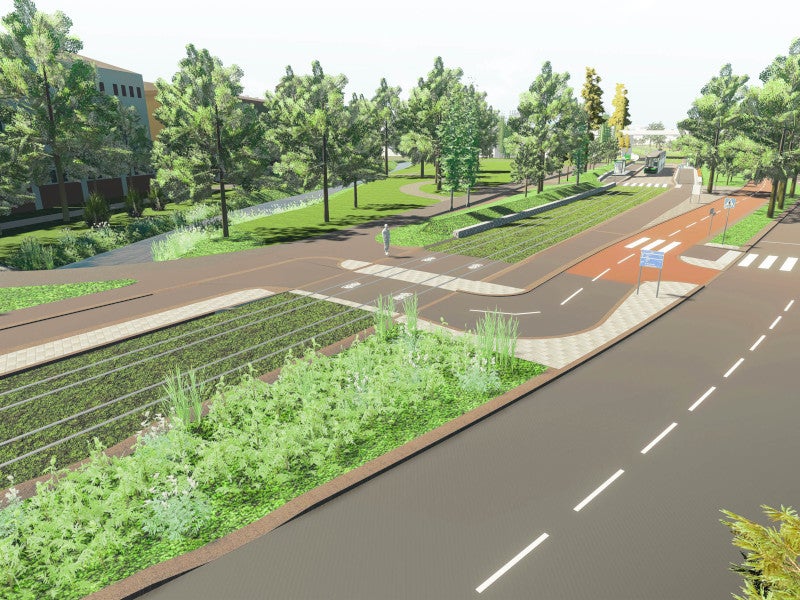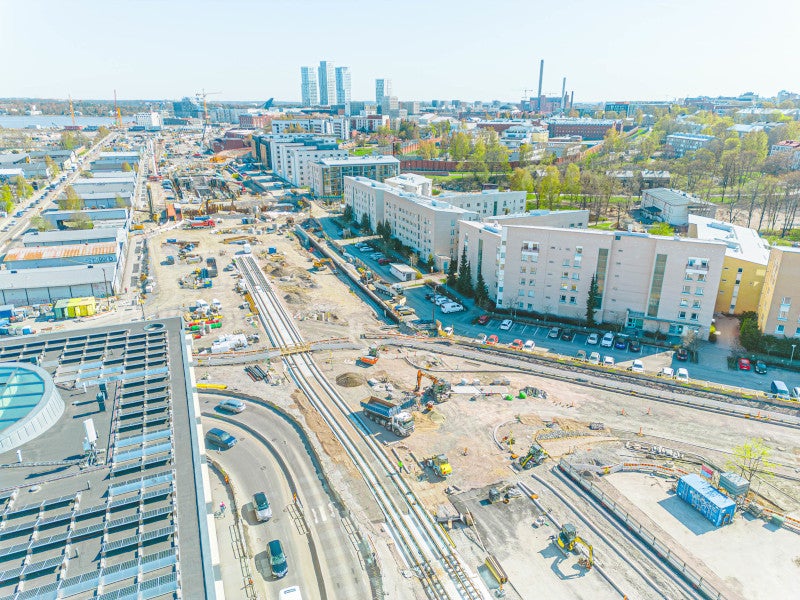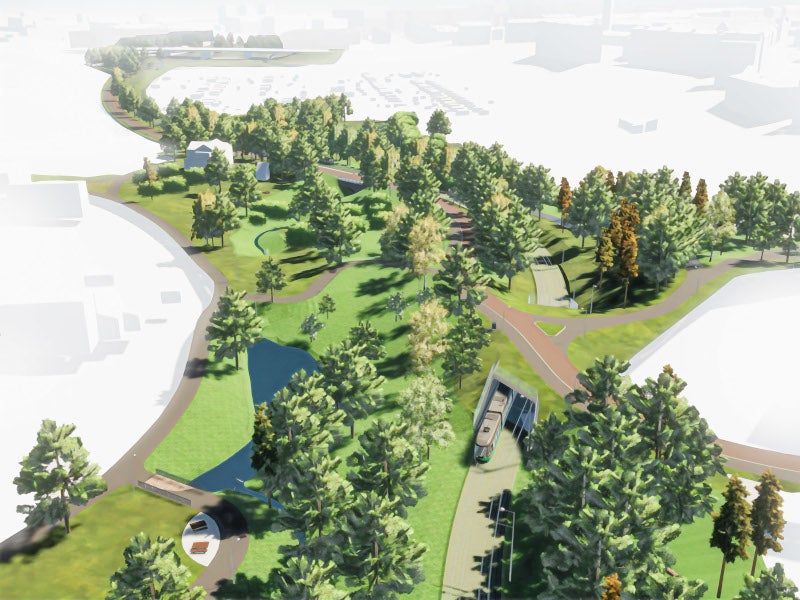The 4.5km Kalasatama-Pasila tramway is a much-anticipated expansion of the existing tram network in Helsinki, Finland. It will enable smooth connections to the metro and local and long-distance trains.
The project is being developed by Helsinki City’s Helsinki Urban Environment Division and Metropolitan Area Transport (Paakaupunkiseudun Kaupunkiliikenne) with an estimated investment of €260m ($287m).
The development phase of the project began in 2020, followed by the execution phase in 2021 and construction works in January 2022. Test runs are expected to start in 2024, following which the completed tramway will commence operations during the same year.
The project will also enhance existing roadways as well as pedestrian and bicycle environments.
Location and development details
The Kalasatama-Pasila tramway is being developed in the Kalasatama region, a former port and industrial area that is currently being developed into a smart city.
When the Kalasatama region development is completed in 2040, more than 10,000 jobs are expected to be created and 30,000 residents will live in the neighbourhood.
The Kalasatama-Pasila tramway extension will provide a dependable public transport link unaffected by traffic jams, serving the entire Kalasatama region. It is expected to become one of the busiest lines on the tram network.
Kalasatama–Pasila tramway details
The Kalasatama-Pasila tramway project includes the construction of tram line 13 from Nihti through the centre of Kalasatama and Vallilanlaakso through the Makelankatu junction to Pasila and includes a balloon loop in Nihti.
The tramway will primarily operate in the middle of the street, in its dedicated lane. Junonkatu and Leonkatu streets will be exceptions as they do not have dedicated tram lanes. The tramway will travel through a park in Vallilanlaakso.
The distance between the tram stops will be around 525m. The typical tram speed in Helsinki is 14km/h, whereas the Kalasatama-Pasila tramway project aims for an average speed between 19km/h and 21km/h.
The tramway’s Nihti terminal at Kalasatama will also feature a transfer link to the Crown Bridges light rail along with a connection to the Pasila tramline at the northern end.
Construction details
The Kalasatama-Pasila tramway project will include the construction of 11,989m of tracks, 25 tram stop shelters, 34 turnouts, 17 track crossings, 56km of cables and four power supply substations.
The tramway tracks will be made up of a track superstructure, points and rail insulation, a rail groove dewatering system and noise insulation on the ground. The rails, rail mounting, electrical insulation of the rails, sleepers in between the tracks, and a slab track form the superstructure. A track gauge of 1,000mm is used and semi-sleepers are 750mm apart.
73,868m² (795,108ft²) of pile slabs, 121m of retaining wall, 928m of streets, a cycle superhighway, pedestrian walkways, cycle paths, bus stops and pedestrian bridges will be developed.
Rolling stock details
The Kalasatama-Pasila tramway project will initially operate with the existing Helsinki trams. It will adopt the new and bigger ForCity Smart Artic X54 light rail trams from 2027.
The ForCity Smart Artic X54 light rail carriage is the Metropolitan Area’s first, with two-way control cabins and doors. The trains feature 34m-long carriages that are ecologically clean, energy-efficient, versatile and simple to maintain.
Sustainability
The Kalasatama-Pasila tramway project is being built to ensure a friendly urban environment, preserve biodiversity and embrace sustainable construction technologies. Its design, procurement and construction decisions are guided by Building Research Establishment Environmental Assessment Methodology infrastructure certification, which considers socioeconomic and environmental aspects.
The goals of the carbon-neutral Helsinki 2035 action plan, which encourages the expansion of sustainable transport options, are met by the new tram route.
In addition to using recycled furniture and stones, low-carbon concrete will be used for piling in the project. Civil Engineering Environmental Quality Assessment and Awards Scheme accreditation will be used to validate the sustainability initiatives.
The project employs lifecycle assessment (LCA) for decision-making, aiming to select options with minimal environmental impact, considering technical requirements, functionality and maintainability. LCAs are conducted using one click LCA software, using data from soil mass and quantity tables as input.
Contractors involved
The project construction is being handled by two alliances: the Sorkan alliance comprising WSP Finland, Destia, Destia Rail and Sweco Infra & Rail, and the Karaatti alliance of GRK Suomi and AFRY Finland along with FLOU and landscape architects Nakyma as subcontractors.
The project from the northern section of Hermannin Rantatie via Vallilanlaakso to Pasila is being engineered and constructed by GRK Suomi, a Finnish infrastructure company, and AFRY, a Swedish engineering, design and consultancy services provider.
The project also includes conduit relocations and new construction by Joint Municipal Engineering Worksite (JMEWS) partners including Helen Sahkaverkko, Helsinki Region Environmental Services (HSY) and many other network operators.

